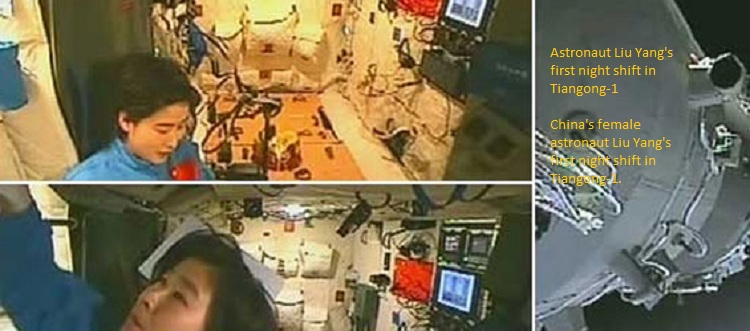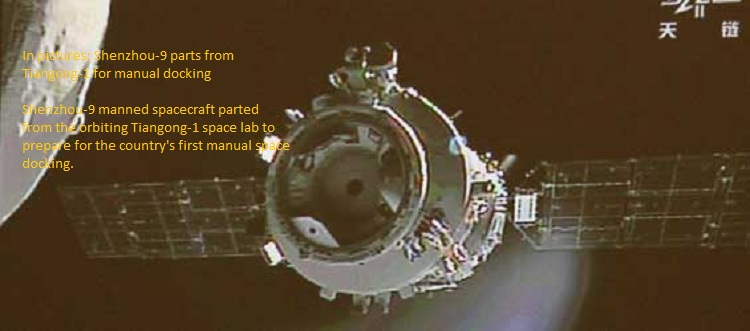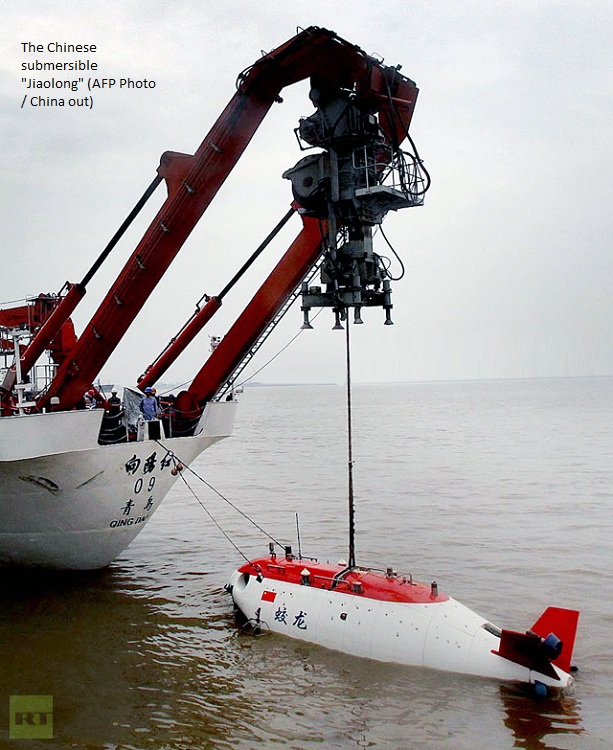23.06.2012
A manual docking will be conducted between Shenzhou-9 spacecraft and the orbiting Tiangong-1 lab module around noon Sunday, according to a spokesperson of China's manned space program.
Since Shenzhou-9 and Tiangong-1 successfully conducted an automated docking and astronauts entered the Tiangong-1 module on June 18, both the spacecraft and the module have been operating normally and the three astronauts were in good condition, said the spokesperson.
All scientific tests have been conducted without any glitches and a manned conjoint flight has been realized, according to the spokesperson.
Compared with the automated docking, the upcoming manual docking will be more challenging in terms of orbit control, said Xie Jianfeng, a space scientist with the Beijing Aerospace Control Center.
Scientists have to get prepared to cope with changes in space environment, although space environment has been forecasted to be relatively calm around noon Sunday, he said.
According to Xie, changes in space environment had exerted "greater than expected" impact on orbit control of Shenzhou-9 on June 17, the second day after it lifted off from a launch center in northwest China's Gobi Desert.
China's first unmanned space docking was completed successful last year with the docking of the Shenzhou-8 spacecraft and the Tiangong-1.
|
China Astronauts Prepare For Historic Weekend Mission
The three Chinese astronauts on board the recently launched Shenzhou IX spacecraft are getting ready for this weekend’s historic mission.
For the first time in China’s short history as space travelers, a Chinese made rocket is going to manually dock with a Chinese made space station, known as Tiangong I. If all goes according to plan, the Shenzhou IX space craft should be re-connected manually to Tiangong by Sunday morning, marking a giant leap for Chinese space travel and the first stages in a permanent space station within the next 8 years.
Shenzhou-9 is already connected to Tiangong-1 as of Monday, but that was done automatically. Sunday’s mission is to see if the astronauts can do it manually.
China Central Television yesterday showed footage of Liu Wang, 43, one of the three Chinese astronauts aboard Tiangong-1, running through drills for the manual docking, while Liu Yang, 33, the country’s first female astronaut, was recording the process. The three will return to the spacecraft again and separate the module for the manual docking to be performed by Liu Wang.
“A manual docking, if successful, will demonstrate the country’s grasp of essential space rendezvous and docking techniques,” Zhou Jianping, chief engineer of China’s manned space program, told the Shanghai Daily on Saturday.
Update: 24.06.2012

BEIJING, June 24 Xinhua) -- Three Chinese astronauts succeeding in China's first manual space docking mission on Sunday congratulated over a new dive record set by the country's manned submersible in its exploration in deep ocean.
"We wish China's manned submersible cause greater achievement! May our motherland prosper!" three Chinese astronauts said in a video message sent back to Earth from the Tiangong-1 space lab module.
Chinese astronauts and oceanaut separately made landmark achievements in the country's exploration of space and the deep ocean.
The astronauts -- veteran astronaut and mission commander Jing Haipeng, crew mate Liu Wang and China's first woman astronaut Liu Yang -- successfully docked manually the spaceship Shenzhou-9 with Tiangong-1 on Sunday afternoon.
Meanwhile, three Chinese oceanauts, Ye Cong, Liu Kaizhou and Yang Bo, on Sunday refreshed the country's dive record in a manned submersible Jiaolong by reaching 7,020 meters beneath the sea in a successful test dive in the Pacific Ocean.

BEIJING, June 24 (Xinhua) -- Chinese astronauts will return to Earth in several days after completing the major tasks, and measures have been taken to ensure a safe return, a spokeswoman of China's manned space program said here Sunday.
"Just like everyone else, I am eagerly expecting their safe and early return," said Wu Ping, a spokeswoman for China's manned space program, told a press conference.
They will stay in the Tiangong-1 lab module for another three to four days, and will then manually maneuver the Shenzhou-9 spacecraft to part from the Tiangong-1 space lab module and end their space journey within one day, according to Wu.
The three Chinese astronauts, including China's first female astronaut, Liu Yang, have almost completed the major tasks of the space mission, she said. They were sent into space aboard Shenzhou-9 on June 16 from a launch center in northwest China's Gobi desert.
But she noted that there could be new situations and problems and promised to give real-time report of the implementation of the tasks.
Measures have been prepared to ensure the safety of the astronauts, who will get back to Earth in a return capsule, she said, adding that the returning technology has been "very mature".
Backups of the key devices aboard the Shenzhou-9 spacecraft have been prepared, and engineers have conducted strict quality control and double-checks on the reentry system, said Wu.
The ground search, rescue and medical personnel have repeatedly exercised for the return, who will use helicopters to find and transfer the three astronauts to safe places as soon as possible, she said.
At the same time, digital pictures will be sent to the ground control center in Beijing to report the rescue progress in a real-time manner, she added.
Three Chinese astronauts Sunday successfully completed a manual docking between Shenzhou-9 spacecraft and the orbiting Tiangong-1 lab module Sunday noon, the first such attempt in China's history of space exploration.
China has planned about 19 billion yuan (about 3 billion U.S. dollars) in budget for the country's space rendezvous and docking missions, a spokeswoman of China's manned space program said Sunday.
Wu Ping, a spokeswoman for China's manned space program, told a press conference that the budget will cover the ongoing Shenzhou-9 spacecraft manned space docking mission, the previous missions conducted by Shenzhou-7, Shenzhou-8 spaceships, as well as the mission to be carried out by the Shenzhou-10 spaceship next year.
Since starting the manned space missions in 1992, Wu said, the country has spent another 20 billion yuan in investment in manned space missions carried out by Shenzhou-6 and previous spaceships.

BEIJING, June 24 (Xinhua) -- Three Chinese astronauts Sunday successfully completed a manual docking between the Shenzhou-9 spacecraft and the orbiting Tiangong-1 lab module, the first such attempt in China's history of space exploration.
It means China has completely grasped space rendezvous and docking technologies and the country is fully capable of transporting humans and cargo to an orbiter in space, which is essential for building a space station in 2020.
Astronaut Liu Wang, assisted by his teammates Jing Haipeng and Liu Yang, controlled the Shenzhou-9 spacecraft to dock with the Tiangong-1 space lab module at 12:48 p.m., which were reconnected about seven minutes later.
About one and a half hours before the docking, Shenzhou-9 parted from Tiangong-1 to a berth point 400 meters away from the module.
To leave room for adjustments, engineers set up four berth points for the spaceship on the same orbit 5 km, 400 meters, 140 meters and 30 meters away from the orbiting lab.
As highly sophisticated space manoeuvre, manual docking requires the astronaut to connect together two orbiters traveling at 7.8 kilometers a second in space without a hitch.
Shortly after the docking, the smiling and waving astronauts greeted the ground crew via camera.
"The manual docking was beautifully conducted. It was very accurate and swift, " said Liu Weibo, who is responsible for China's astronaut system.
The manual docking was completed in only 7 minutes, 3 minutes faster than the automatic docking, said Liu.
Liu explained to Xinhua the three factors behind today's manual docking success.
Firstly, Liu Wang has grasped the sophisticated manual docking technologies very well and his psychological status has been sound. Secondly, the three astronauts were in close cooperation. Thirdly, the domestically-made docking system was reliable, he said.
The astronauts, 343 km away from Earth, were also greeted by Chinese oceanauts from the Mariana Trench, 7,020 meters beneath the Pacific Ocean, where they just broke the country's dive record in a manned submersible on Sunday morning.
"We hope the manual docking is a great success and wish for brilliant achievements in China's manned space and manned deep-sea dive causes," read the message sent by the three oceanauts aboard the manned submersible Jiaolong.
Wu Ping, spokeswoman for China's manned space program, said Sunday the manual space docking was "a complete success."
She told a press conference in Beijing that the three Chinese astronauts had already re-entered the space lab module to continue their scientific experiments.
The spacecraft and the space lab were previously joined together by an automated docking last Monday. The three astronauts, including the country's first female astronaut, Liu Yang, were sent into space onboard Shenzhou-9 on June 16 from a launch center in northwest China's Gobi desert.



Komplizierte Mission geglückt China dockt Raumschiff per Handsteuerung an
Das ist ein Meilenstein in der chinesischen Raumfahrt: Das komplizierte Abdock und Andockmanöver des Raumschiffs ''Shenzhou'' an ein Weltraummodul verläuft reibungslos. China feiert die geglückte Mission als erfolgreiche Vorbereitung für den Bau einer eigenen Raumstation, welche bis 2020 entstehen soll.

